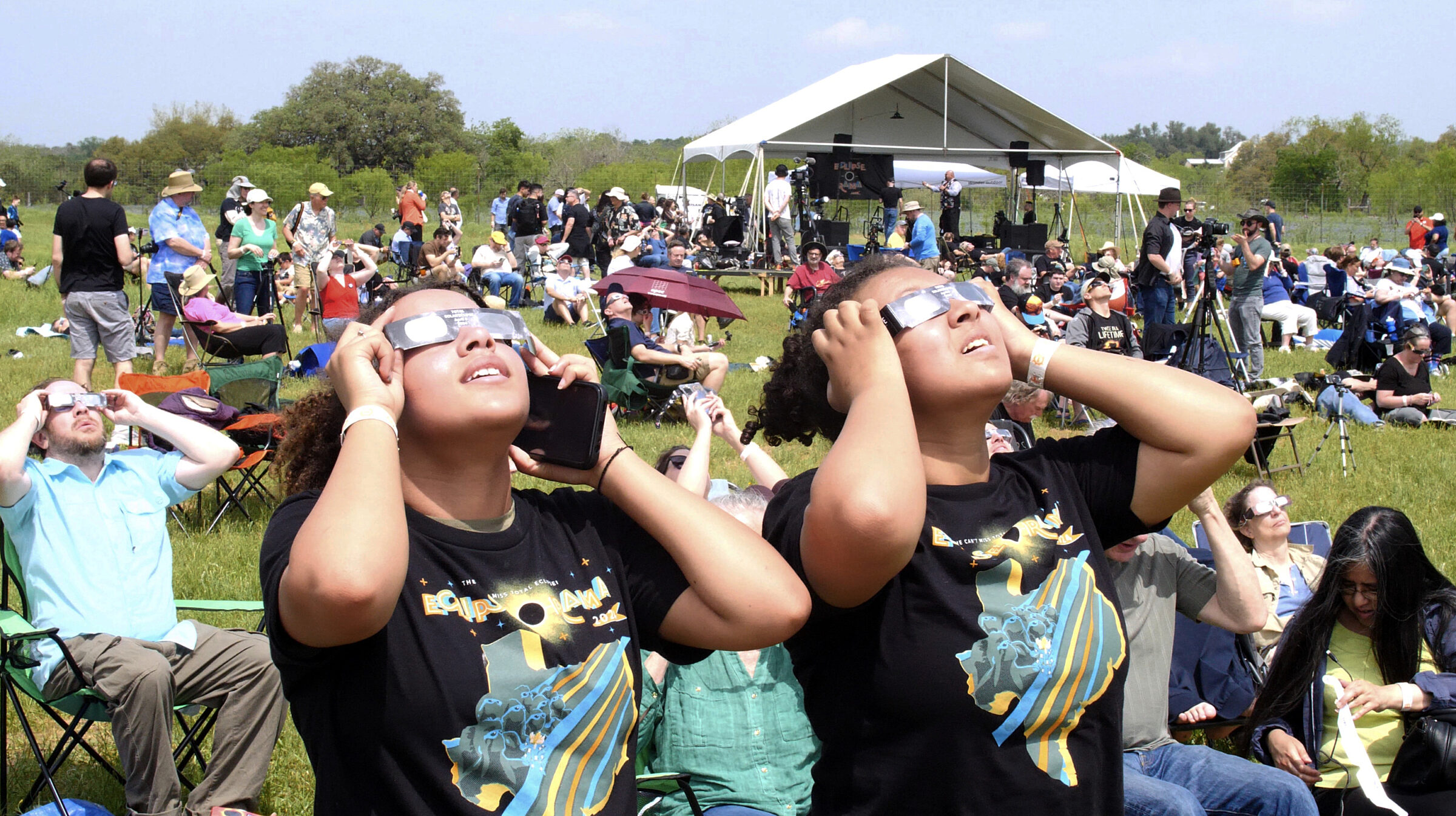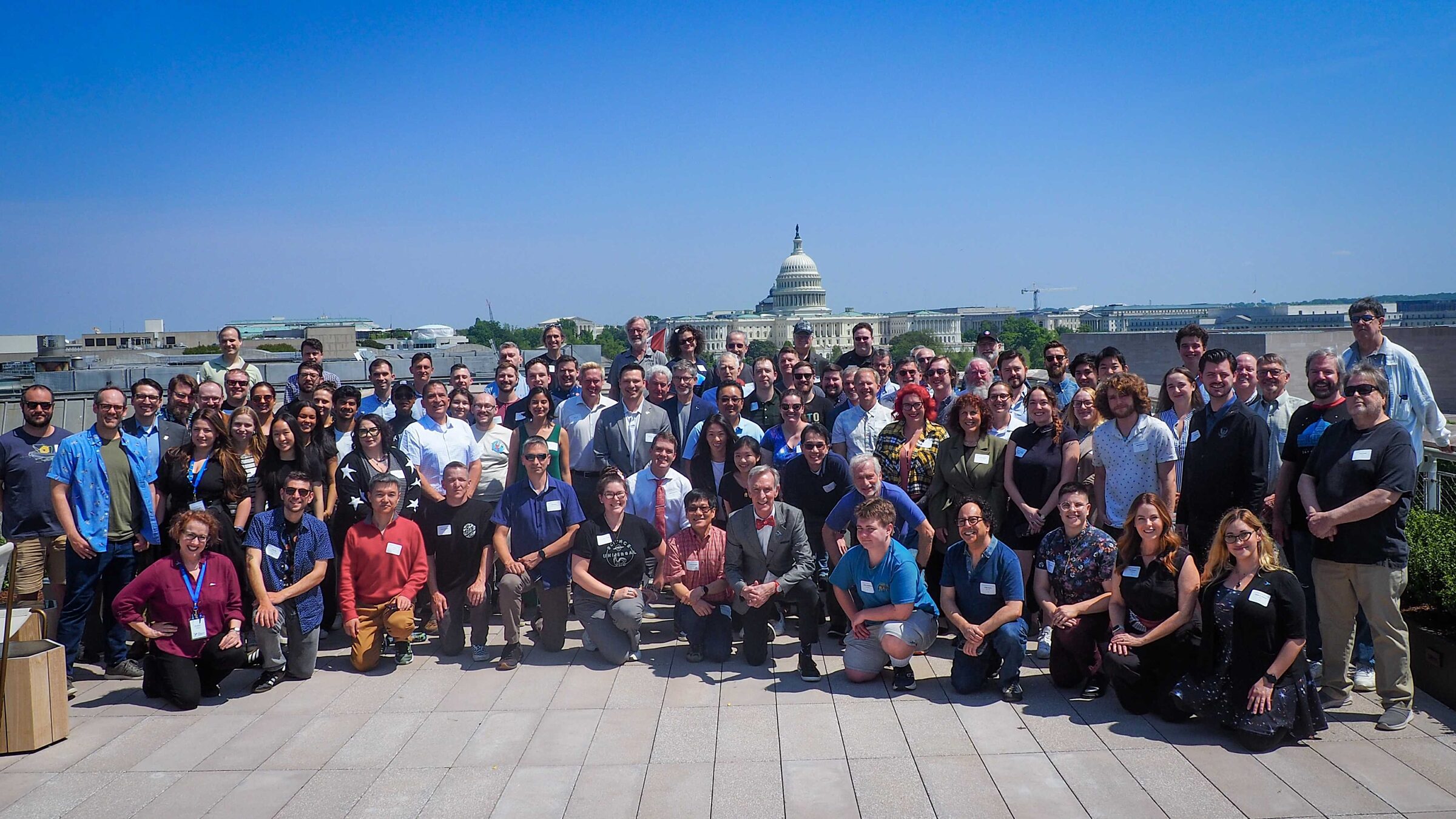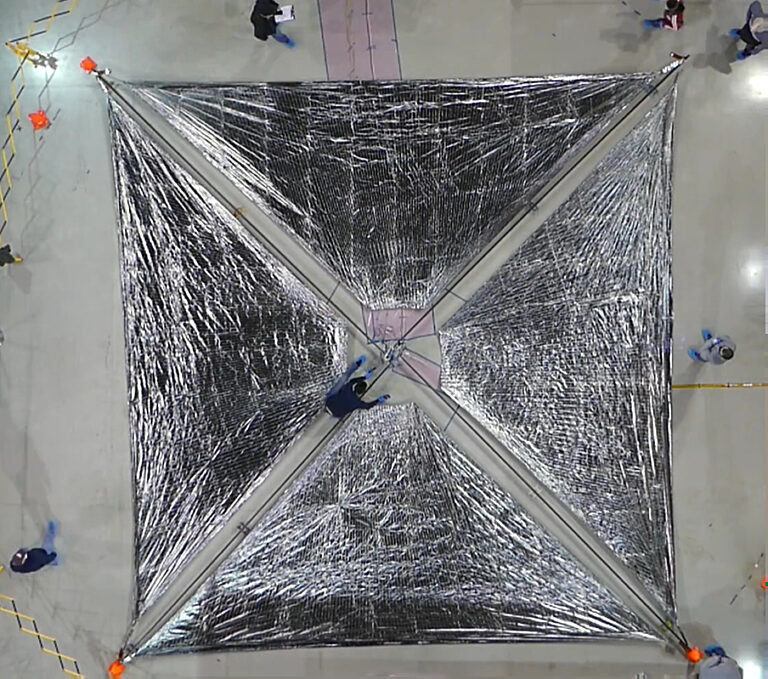Your impact: June solstice 2024
Symposium in Pasadena, California
In February, The Planetary Society hosted a two-day symposium bringing together some of the world’s leading experts in the search for life, representing fields including astrobiology, SETI, planetary science, and more. This symposium will inform the Society’s future efforts to advance the search for life.

Celebrating the April 2024 eclipse
Our Eclipse-O-Rama 2024 event was a great success. Over 800 Planetary Society members from around the world came to Fredericksburg, Texas, to witness the April 8, 2024, total solar eclipse. The two-day festival included educational presentations, fun activities, music, and much more. It was a special opportunity to come together and celebrate our shared passion for space, and there’s no doubt that those who attended made memories that will last a lifetime.

An appetite for space salad
In 2023, The Planetary Society awarded grants to two projects through our STEP (Science and Technology Empowered by the Public) Grant program. STEP Grants are competitively awarded through an open international process. One of the winning projects, led by Dr. Andrew Palmer of the Florida Institute of Technology in collaboration with several other researchers, aims to test two different methods of producing crops in space and on other worlds using water and using regolith, the surface dirt found on other worlds. Dr. Palmer provided this update on his project.
The team kicked off our project in 2023 by visiting Professor Rafael Loureiro’s lab at Winston-Salem State University (WSSU), where most of the plant growth was set to occur. Finally meeting face to face was such an amazing opportunity for some of us who had been working together for nearly two years but had never met in person. Over the next two days, we spent six to seven hours laying out the finer details of the project. Along the way, we also settled on an acronym for the project: CHRGE (Comparing Hydroponic and Regolith Growth and Evolution).
We also exchanged emails with Professor Travis Hunsucker, our systems engineering analyst, and established what information he’d need to make his first-generation models for comparing these two different growth systems. Then, we were off to work in the lab, preparing our first generation of plant samples for transfer into lunar regolith or hydroponic systems.
Later that year, we presented the project at a meeting of the American Society of Gravitational and Space Research, thanking all the members of The Planetary Society for their support. The presentation sparked good discussion and a lot of interest from space biologists familiar with the challenge. It was great to get so much feedback and validation of the significance of this project.

Several months later, we have now completed at least one generation of both lettuce and tomato growth in lunar regolith as well as by hydroponics. Those samples have been frozen and are in storage at WSSU, waiting to be shipped to the Jet Propulsion Laboratory and Florida Tech for the analysis of their metabolites as well as their microbiome (bacterial partners). The regolith simulants from these studies are being used as substrates for a new generation of crops, and we are starting to characterize the chemical and physical changes to these simulants as a result of them having already been used once to grow plants.
At the Palmer Lab at Florida Tech, we’ve been doing practice runs with lettuce and tomatoes that we are growing in our own lab, optimizing our sampling methods and analysis so we are ready to run once we get our samples back from WSSU. Similarly, Dr. Laura Fackrell has been working on methods for isolating and characterizing the microbiomes of the regolith simulants as well as the plant tissue. Professor Travis Hunsucker is working toward a first-generation model to compare these two systems.

We also took three students to the regional meeting of the American Society of Plant Biology this March to present on some of their work on this project, and we hope to submit the first paper from this project by August of this year.
None of this would have been possible without the support of The Planetary Society. Thank you!
Space policy and advocacy in action
Policy principles for Mars sample return
In February, with extensive input from our board of directors, The Planetary Society released a set of principles to guide the future of Mars Sample Return, which at the time of writing was under revaluation by NASA due to unexpected cost growth and mismanagement.
The science provided by Mars Sample Return remains extraordinarily compelling. Given the perilous state of the program and the possible temptation to cut the science return to save money, The Planetary Society proposed a set of principles for how NASA should approach a restructured Mars Sample Return campaign:
- Return the full suite of samples collected by the Perseverance rover; don’t leave precious samples on the surface to shave proverbial pennies off the project’s cost.
- Don’t delay. Pursue the project now while we have samples on the surface of Mars; an experienced Mars workforce; and buy-in from our European allies, who have made a billion-euro-plus commitment to the effort.
- And do it with balance; we can’t let MSR consume NASA’s entire science directorate. There are other missions, such as the Habitable Worlds Observatory, that are important priorities in their own right that will advance our search for life in the Cosmos.
On April 15, NASA Administrator Bill Nelson announced that the agency would solicit ideas from industry and from other NASA institutions for a cheaper and faster version of Mars Sample Return and would consider returning only a fraction of the samples already collected. NASA leadership was not satisfied with the results of their internal study, which would have delayed the project to 2040 at a cost of $11 billion. NASA will evaluate proposals and make a program decision in the fall.
Advocacy actions in support of NASA's budget
In February, the Jet Propulsion Laboratory (JPL) announced layoffs of 530 people, roughly 8% of the lab’s full-time workforce. This dramatic action was caused by a congressional fight over Mars Sample Return. The U.S. Senate had proposed to slash MSR’s budget by $522 million; the House of Representatives, on the other hand, had strongly supported the project and proposed an increase to $949 million, the amount originally requested by the White House. Due to unrelated politics delaying final 2024 appropriations by more than five months, NASA restricted the rate of spending on MSR to match the lowest possible budget scenario from the Senate.
In response to this, The Planetary Society called on our U.S. members to write to their representatives in Congress and urge them to pass a budget supporting NASA’s science portfolio, including MSR and other high-priority missions. Within a matter of days, over 1,800 people from every state had taken action online, speaking up for the importance of space.
Ultimately, Congress passed a budget preserving most science programs, though funding did decrease. MSR was reinforced as NASA’s top planetary priority, and though its budget was not restored, NASA was granted flexibility during its restructuring period.
The Day of Action
On April 29, we held our Day of Action, bringing nearly 100 advocates
from across the United States to Washington, D.C., to meet with their
representatives in Congress and speak about the importance of investing
in space science and exploration. Research has shown that in-person
constituent meetings like these are the most effective way to engage
elected officials on topics like space exploration. Participants in this
year’s Day of Action advocated for funding for NASA’s overall science
portfolio, including Mars Sample Return, Habitable Worlds Observatory,
planetary defense, and the search for life beyond Earth. You can read
more about the Day of Action at planetary.org/dayofaction.

LightSail continues to advance solar sailing
Five years after The Planetary Society’s LightSail 2 spacecraft launched, the mission continues to contribute to the field of solar sailing. NASA’s ACS3 solar sail mission, which aims to deploy a sail similar in shape to that of LightSail 2 but with a little more than twice the surface area and different boom material, is making progress. The Planetary Society continues to work with NASA, sharing what we learned about solar sailing from our LightSail program. Planetary Society Chief Scientist Bruce Betts also served on the ACS3 mission’s review panel. ACS3 successfully launched into Earth orbit on April 23. Learn more at planetary.org/space-missions/acs3.

The Time is Now.
As a Planetary Defender, you’re part of our mission to decrease the risk of Earth being hit by an asteroid or comet.
Donate TodayThe Planetary Report • June Solstice
Help advance space science and exploration! Become a member of The Planetary Society and you'll receive the full PDF and print versions of The Planetary Report.


 Explore Worlds
Explore Worlds Find Life
Find Life Defend Earth
Defend Earth


